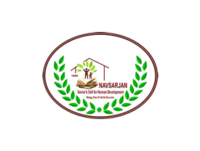
Fr. Rajeev Chakarnayan s.j
Director
Surat the second biggest city of Gujarat State in India is along the river Tapi. The city has changed a lot over the year and particularly in the last 3 decades or so after the introduction of new liberal economy, globalization and privatization across India.
Surat has been financial capital of Gujarat and industrial hub for diamond, textile and Jhari industries.Inflow of migrants from within the state and across is highest in Gujarat and therefore it is said that in Surat every 3rd person is a migrant. There is a large population of migrants hailing from outside Gujarat State such as Bihar, Madhya Pradesh, Maharashtra, Orissa, and Utter Pradesh.
There are also intra-State migrants mainly from the tribal belt of northeast Gujarat and Saurashtra region. With increase in urbanisation in India and particularly in the State of Gujarat, poverty has increased in urban cities. The rate of urbanisation is higher in Gujarat than India. The total population in the state as per census 2011 is 2.57 crore, out of it 1.46 crore population lives in Class I cities, like Ahmedabad, Vadodara, Surat Rajkot, Bhavnagar, Jamnagar and Junagarh. According to world population review (http://worldpopulationreview.com/territories/gujarat-population/) Surat is the eighth largest city and ninth largest metropolitan area in the country.
Economy is closely related to politics and social life of people. The rich and powerful largely belong to the so-called upper castes (brahmin, kshatriya and vaishya in India) who make only about 16.5% of India’s population dominate politics, business and other sectors. India remains infected by Varna-caste ideology and practice (system of social discrimination). Patriarchy, gender and religious discriminations are high as well and often time are fueled by political parties and associated social groups.
Surat is part of larger Indian reality and its economy is reflected in social life and political ideology. There is a sizable class of rich and powerful, a big upper middle class, a huge middle class and a considerable class of poor and marginalized who also happened to be from socially marginalized categories such as Dalits, Adivasi, Muslims and other backward communities (OBC).
Majority of Surat slum dwellers who in real terms are city makers are members of SCs, STs and OBCs. They are engaged in sweeping, cleaning, manual scavenging, construction workers, diamond and textile unit workers, vendors, domestic workers, rag pickers, unorganised labourers, etc. They have no option except to stay in exiting slums or find open areas for new slums due to high cost of living in cities.
Surat economy also in a substantial way depends on the unorganized labour force and people who live in the slum and find employment in the city. However, the city makers who are unorganized and reside in the slums are not treated with dignity and respect as the other citizens of India residing in decent to posh areas of Surat. Surat has nearly 334 slums as per the record of Surat Municipal Corporation.
These slums lack basic facilities such as toilets, drainage system, sufficient and potable water supply, street payment and lights, etc. Most of the slums are located in public lands; open areas, reserve plots, pavements, railway land, wasteland, surrounding of lakes. With pace of time sizes of slums are expanding with increase of population, migration and high cost of rent. Besides, new slums are also developing. There is a huge work force, which is unorganised and inadequately paid with no awareness of their rights as per labour law 2012.

